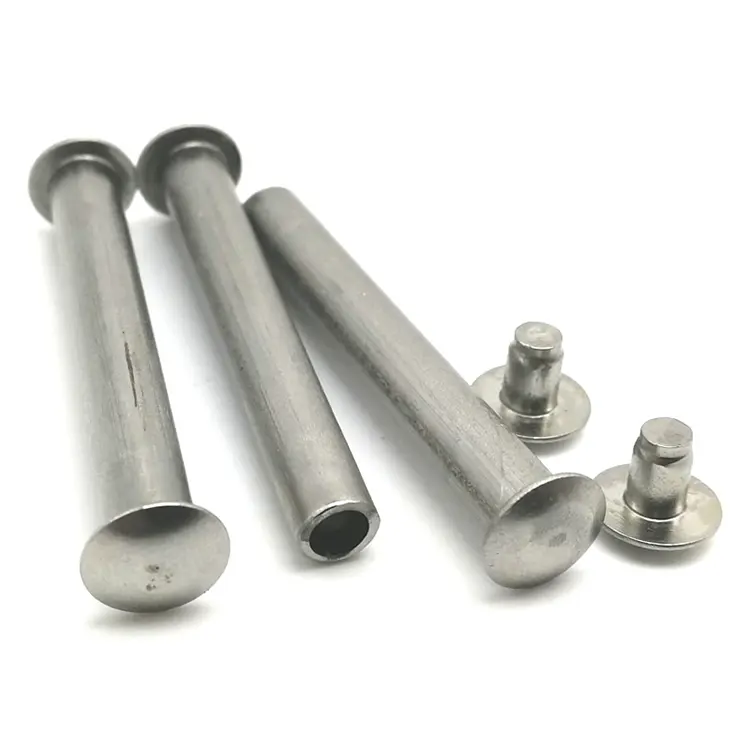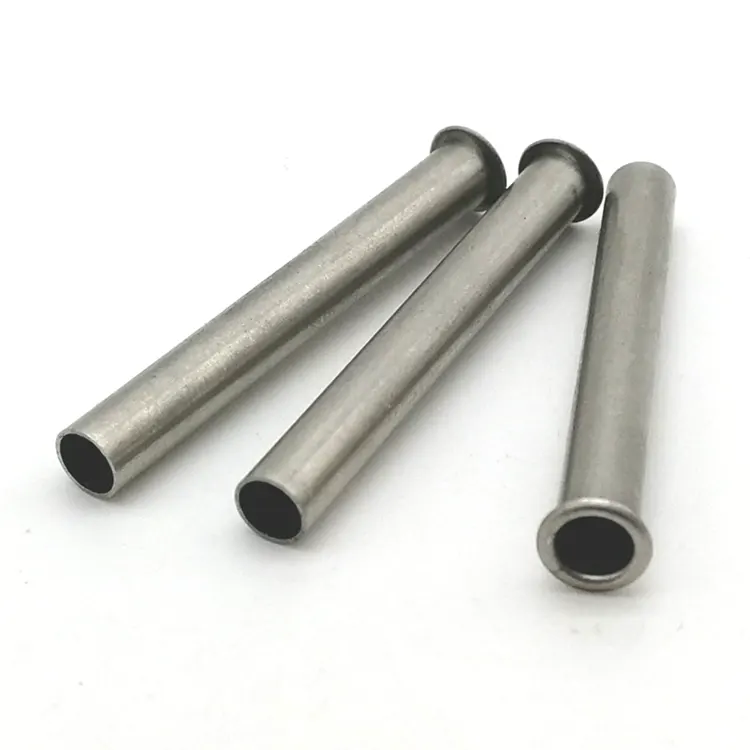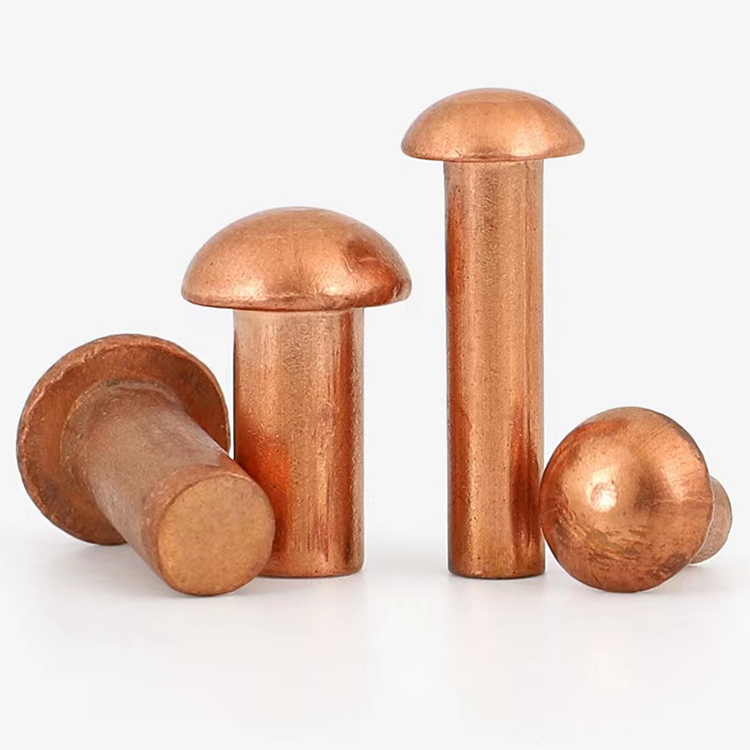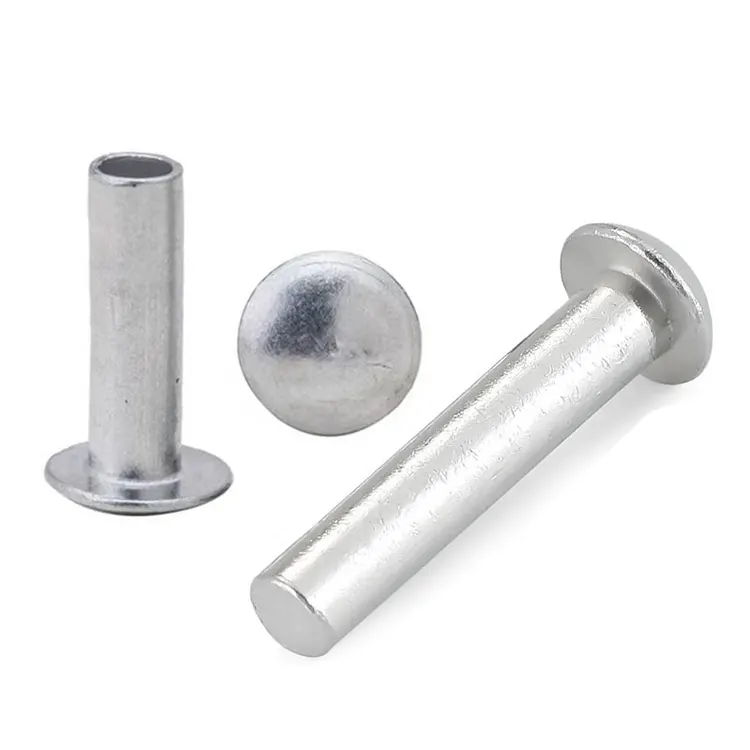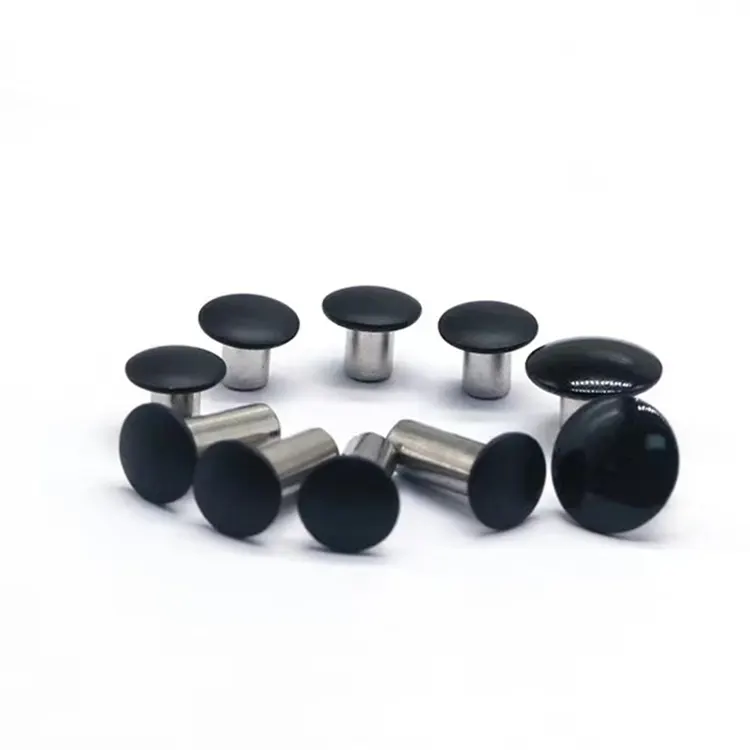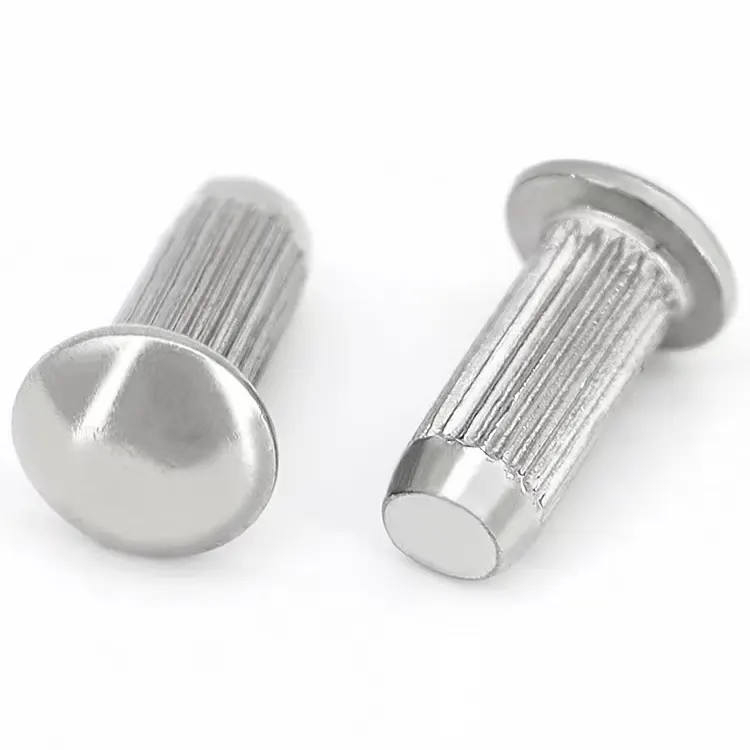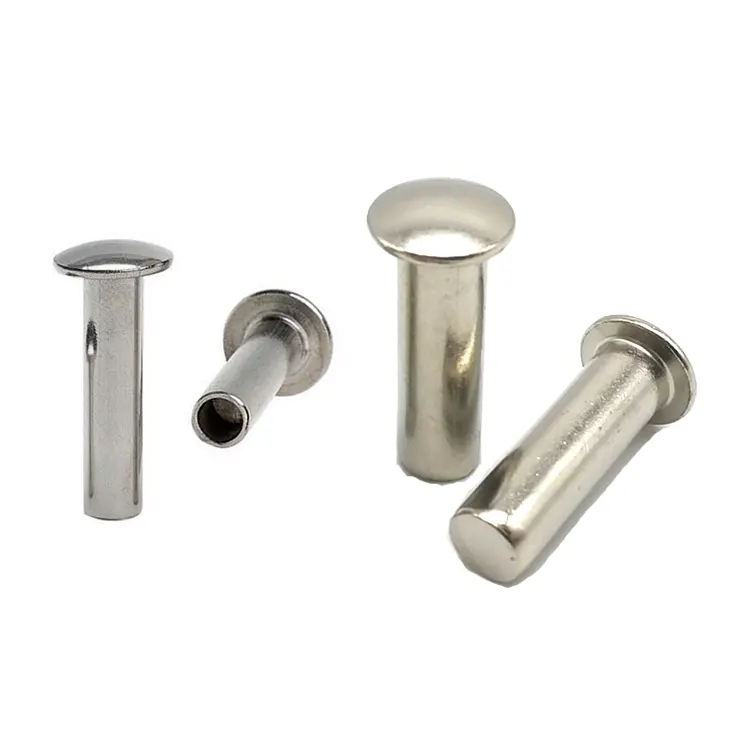Rivets speciali
One of Chinese manufacturer of Special Rivets, offering excellent quality at a competitive price, is Notin. Feel free to get in touch.
In the field of mechanical manufacturing and assembly, rivets are a common fastener used to professionally connect two or more parts. According to the degree of standardization, rivets can be divided into two categories: standard rivets and non-standard rivets. The size, shape and material of standard rivets are uniformly specified, while non-standard rivets are customized according to specific needs. The following will introduce the characteristics and applications of non-standard rivets from multiple aspects.
What are non-standard rivets?
Non-standard rivets are also called special rivets. They refer to rivets that do not meet national standards or industry general standards. Their size, material, structure and other parameters are designed and manufactured according to the specific needs of customers. Due to the different connection requirements of different industries and equipment, standard rivets may not meet the requirements of certain special scenarios, so non-standard rivets came into being.
What are the characteristics of special rivets?
(1) Strong customization: Non-standard rivets can be personalized according to factors such as the use environment, stress conditions, and assembly methods to ensure that they perform well in actual applications.
(2) Diverse materials: In addition to common carbon steel and stainless steel, non-standard rivets can also be made of special materials such as aluminum alloy, copper alloy, titanium alloy, etc. to meet different corrosion resistance, strength and weight requirements.
(3) Flexible structure: The structure of non-standard rivets can be adjusted according to needs, such as head shape, stem diameter, length, etc., and can even be designed to be hollow, semi-hollow or other special shapes.
- View as
Rivetti a testa cilindrica
I rivetti a testa cilindrica sono componenti meccanici utilizzati per fissare o collegare materiali metallici. Sono ampiamente utilizzati nella produzione industriale, nella produzione di macchinari, nelle riparazioni automobilistiche e in altri campi. La funzione di un rivetto è quella di inserire il tubo del rivetto nei due pezzi di metallo da unire. La forma della testa del rivetto e della sezione del tubo comprimono il rivetto, creando una connessione ermetica. Nuote Metals è specializzata nella produzione di rivetti Pan Head. Disponiamo di oltre 40 macchine per lo stampaggio a freddo e migliaia di matrici, con una capacità produttiva giornaliera fino a 10 milioni di rivetti. Diamo il benvenuto a ordini personalizzati basati sui vostri disegni e campioni.
Per saperne di piùInvia richiestaRivetti verniciati
I rivetti verniciati con testa verniciata sono altamente resistenti alla corrosione. Lo strato di vernice, tipicamente spesso 15-25 micron, li isola efficacemente dall'umidità e dalle sostanze chimiche. I test in nebbia salina dimostrano che i rivetti verniciati possono resistere alla ruggine per oltre 500 ore, tre volte più a lungo dei rivetti non rivestiti. Nuote Metals è specializzata in questo tipo di rivetti, la nostra sede è a Dongguan, in Cina.
Per saperne di piùInvia richiestaRivetti a testa di fungo
Il nome del rivetto a testa di fungo deriva dal suo aspetto e dalle caratteristiche strutturali. Un'estremità del rivetto è a forma di fungo e relativamente larga, fornendo una migliore superficie di compressione ed un migliore effetto estetico. I rivetti semitubolari con testa a fungo hanno un design semicavo all'altra estremità. Durante l'installazione, viene utilizzato uno strumento speciale per espandere la parte cava per formare una connessione sicura. Questo design consente al rivetto di adattarsi a diversi spessori di materiale dopo l'installazione, mantenendo una giunzione pulita ed esteticamente gradevole. Sono disponibili anche rivetti solidi con testa a fungo, rivettati a vite per formare una testa a forma di fungo all'estremità della coda, creando una connessione esteticamente gradevole e sicura.
Per saperne di piùInvia richiestaRivetti maschio femmina
Nuote Metals è un produttore specializzato di rivetti maschio-femmina in Cina. I vantaggi dei rivetti maschio-femmina sono l'installazione semplice e il basso costo. Rispetto ad altri metodi di connessione, come la saldatura o gli adesivi, i rivetti maschio-femmina non richiedono competenze specializzate o lunghi tempi di polimerizzazione. Tuttavia, anche i loro svantaggi sono significativi: la forza della connessione è limitata, il che la rende inadatta ad ambienti ad alta intensità o ad alte vibrazioni. Dopo un uso prolungato, potrebbero allentarsi e richiedere un'ispezione regolare.
Per saperne di piùInvia richiestaRivetti zigrinati
I rivetti zigrinati sono generalmente costituiti da una testa, un gambo e una coda. Il gambo presenta un motivo zigrinato diagonale o dritto, una struttura lavorata in rilievo che fornisce una presa migliore durante l'installazione e impedisce lo scivolamento dell'utensile. Il gambo è cilindrico, con lunghezza e diametro variabili a seconda dell'applicazione. Le dimensioni comuni vanno da 3 mm a 8 mm di diametro e da 5 mm a 20 mm di lunghezza. La coda può anche avere filettature o scanalature per l'accoppiamento con dadi o altri elementi di fissaggio.
Per saperne di piùInvia richiestaRivetti a testa tonda in ferro
I rivetti a testa tonda in ferro sono un elemento di fissaggio ampiamente utilizzato nella produzione industriale e nella vita di tutti i giorni. Il loro design unico e le prestazioni eccellenti li rendono la scelta migliore in molti campi. Nuote Metals è specializzata nella produzione di rivetti in ferro a testa tonda. Le dimensioni dei nostri rivetti rispettano rigorosamente le tolleranze specificate sui disegni del cliente. Ogni processo è soggetto a un ciclo di controllo qualità per garantire la qualità del prodotto finale. Disponiamo di decine di macchine per lo stampaggio a freddo, con una produzione giornaliera di decine di milioni di rivetti.
Per saperne di piùInvia richiestaWhat are the characteristics of special rivets?
(1) Strong customization: Non-standard rivets can be personalized according to factors such as the use environment, stress conditions, and assembly methods to ensure that they perform well in actual applications.
(2) Diverse materials: In addition to common carbon steel and stainless steel, non-standard rivets can also be made of special materials such as aluminum alloy, copper alloy, titanium alloy, etc. to meet different corrosion resistance, strength and weight requirements.
(3) Flexible structure: The structure of non-standard rivets can be adjusted according to needs, such as head shape, stem diameter, length, etc., and can even be designed to be hollow, semi-hollow or other special shapes.
Manufacturing process of special rivets
The manufacturing of non-standard rivets involves multiple links, mainly including:
1.Material selection: Select suitable metal or alloy materials according to the use environment. 2. 2.Cold heading or hot heading: Use pressure processing to form the basic shape of the rivet into the metal blank.
3.Turning or milling: Fine-process the details such as the head and stem of the rivet to ensure dimensional accuracy.
4.Surface treatment: Such as galvanizing, nickel plating, anodizing, etc. to improve corrosion resistance or aesthetics.
Advantages and limitations of special rivets
(1) Advantages: They can meet special needs, improve assembly efficiency and connection reliability, and are suitable for complex or high-demand application scenarios.
(2) Limitations: Since they are customized products, the production cost is high, the delivery cycle is relatively long, and customers are required to provide detailed technical parameters.
How to choose suitable special rivets?
(1) Clarify the needs: Determine the key parameters such as the rivet's operating environment, stress conditions, and corrosion resistance requirements.
(2) Material matching: Select the appropriate material based on actual needs to avoid over-design that leads to increased costs.
(3) Communicate with suppliers: Provide detailed technical drawings or samples to ensure that the non-standard rivets produced meet expectations.
What are the main applications of special rivets?
(1) Aerospace: Aircraft, rockets and other equipment have extremely high requirements for the weight, strength and high-temperature resistance of fasteners. Non-standard rivets can be optimized according to specific needs.
(2) Automobile manufacturing: Certain special models or high-performance vehicles may require non-standard rivets to meet the needs of lightweight or high-strength connections.
(3) Electronic equipment: Precision instruments or small electronic equipment may require micro non-standard rivets to ensure the stability and compactness of the connection.
(4) Construction industry: Some special-structured buildings or decoration projects may use non-standard rivets to meet specific installation requirements.
Market status of special rivets
With the advancement of industrial technology, more and more industries have begun to use non-standard rivets to optimize product design. At present, non-standard rivet manufacturers are mainly concentrated in the Yangtze River Delta and Pearl River Delta regions in China, and can provide a variety of customized services. Due to the high unit price of non-standard rivets, its market size is relatively small, but the demand in the high-end manufacturing field continues to grow.
Future development trends
(1) Lightweight design: With the improvement of energy-saving and environmental protection requirements, non-standard rivets made of lightweight materials will be more popular.
(2) Intelligent production: Automated equipment and digital management will further improve the production efficiency and quality stability of non-standard rivets.
(3) Wider application: Emerging industries such as new energy and robotics may drive the growth of demand for non-standard rivets.
In summary, special rivets are highly customized fasteners that can meet special needs that standard rivets cannot meet. Although its production cost is relatively high, it plays an irreplaceable role in industries such as aerospace, automobiles, and electronics. In the future, with the advancement of manufacturing technology, the application scope of non-standard rivets is expected to further expand.

